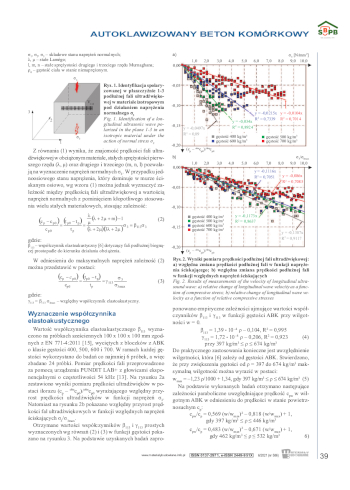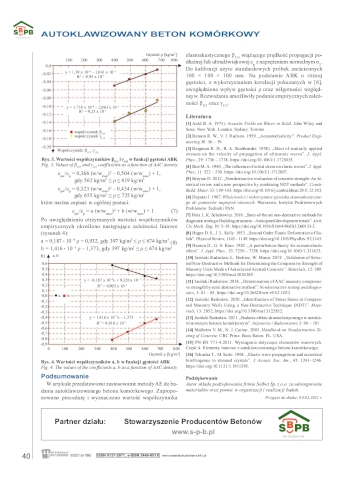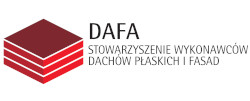The use of the elastoacoustic effect for testing walls made of AAC masonry units
dr hab. inż. Radosław Jasiński, prof. PŚ, Politechnika Śląska; Wydział Budownictwa
ORCID: 0000-0003-4015-4971
Adres do korespondencji: Ten adres pocztowy jest chroniony przed spamowaniem. Aby go zobaczyć, konieczne jest włączenie w przeglądarce obsługi JavaScript.
DOI: 10.15199/33.2021.06.02
Oryginalny artykuł naukowy
Streszczenie. Technika ultardźwiękowa wykorzystywana jest do określania wytrzymałości na ściskanie lub wykrywania wewnętrznych nieciągłości struktury. Używana jest także do określania stanu odkształceń oraz naprężeń w konstrukcjach i bazuje na efekcie elastoakustycznym (AE). Dotychczas efekt AE dość dobrze rozpoznano w materiałach jednorodnych, natomiast w przypadku materiałów porowatych czy niejednorodnych, takich jak beton czy skała, badania nie były prowadzone. Przedmiotem badań prezentowanych w artykule było wykorzystanie zjawiska AE do wyznaczania naprężeń w niewielkich modelach muru wykonanego z elementów z autoklawizowanego betonu komórkowego. Przedstawiono zależności wiążące wartość naprężeń ściskających z prędkością podłużnej fali ultradźwiękowej z uwzględnieniem wilgotności.
Słowa kluczowe: konstrukcje murowe; autoklawizowany beton komórkowy (ABK);wytrzymałość na ściskanie ;metoda nieniszcząca (NDT); badania ultradźwiękowe; efekt elastoakustyczny (AE).
Abstract. The ultrasonic technique is used not only to determine the compressive strength or to detect internal structure discontinuities. It is also used to determine the state of deformation and stress in structures and based on the elastoacoustic effect (AE). So far, the AE effect has been recognized quite well in homogeneous materials in the case of porous or heterogeneous materials such as concrete or rock, due to the large dispersion of the results, the study has not been conducted. The subject of the presented research was the use of the AE efect to determine the stresses in small models of masonry made of autoclaved aerated concrete masonry units. The relationship between the value of compressive stresses and the velocity of the longitudinal ultrasonic wave with regard to humidity was presented.
Keywords: masonry structures; autoclaved aerated concrete masonry units (AAC); compresive strenght; non-destructive (NDT) technique; ultrasonic testing; elastoacoustic effect (AE).
Literatura
[1] Auld B. A. 1973). Acoustic Fields an Waves in Solid. John Wiley and Sons. New York. London. Sydney. Toronto.
[2] Benson R. W., V. J. Raelson. 1959. „Acoustoelasticity”. Product Engineering 30: 56 – 59.
[3] Bergman R. H., R. A. Shahbender. 1958). „Efect of statically applied stresses on the velocity of propagation of ultrasonic waves”. J. Appl. Phys., 29: 1736 – 1738. https://doi.org/10.1063/1.1723035.
[4] BiotM.A. 1940. „The influence of initial stress on elastic waves”. J. Appl. Phys, 11: 522 – 530. https://doi.org/10.1063/1.1712807.
[5] Breysse D. 2012. „Nondestructive evaluation of concrete strength:An historical review and a new perspective by combining NDT methods”. Constr. Build.Mater. 33: 139–163. https://doi.org/10.1016/j.conbuildmat.2011.12.103.
[6] Deputat J. 1987.Właściwości i wykorzytanie zjawiska elastoakustycznego do pomiarów naprężeń własnych. Warszawa. Instytut Podstawowych Problemów Techniki PAN.
[7] Hola J., K. Schabowicz. 2010. „State-of-the-art non-destructive methods for diagnostic testing of building structures –Anticipated development trends”.Arch. Civ. Mech. Eng. 10: 5–18. https://doi.org/10.1016/S1644-9665(12)60133-2.
[8] Huges D. S., J. L. Kelly. 1953. „Second Order Elastic Deformation of Solids”. Physical Review, 1145 – 1149. https://doi.org/10.1103/PhysRev. 92.1145.
[9] Husson D., G. S. Kino. 1982. „A perturbation theory for acoustoelastic efects”. J. Appl. Phys., 53: 7250 – 7258. https://doi.org/10.1063/1.331623.
[10] Jasiński Radosław, Ł. Drobiec, W. Mazur. 2019. „Validation of Selected Non-DestructiveMethods for Determining the Compressive Strength of Masonry Units Made ofAutoclavedAerated Concrete”. Materials, 12: 389. https://doi.org/10.3390/ma12030389.
[11] Jasiński Radosław. 2018. „Determination ofAAC masonry compressive strength by semi destructivemethod”. Nondestructive testing and diagnostics, 3: 81 – 85. https://doi.org/10.26628/wtr.v91i2.1023.
[12] Jasinski Radosław. 2020. „Identification of Stress States in Compressed Masonry Walls Using a Non-Destructive Technique (NDT)”. Materials, 13: 2852; https://doi.org/10.3390/ma13122852.
[13] Jasiński Radosław. 2021. „Badania efektu akustoelastycznegowautoklawizowanym betonie komórkowym”. Inżynieria i Budownictwo 3: 96 – 101.
[14] Malhotra V. M., N. J. Carino. 2003. Handbook on Nondestructive Testing of Concrete. CRC Press: Boca Raton. FL. USA.
[15] PN-EN 771-4:2011. Wymagania dotyczące elementów murowych. Część 4: Elementy murowe z autoklawizowanego betonu komórkowego.
[16] Tokuoka T.,M. Saito. 1968. „Elastic wave propagations and acoustical birefringence in stressed crystals”. J. Acoust. Soc. Am., 45: 1241–1246. https://doi.org/10.1121/1.1911595.
Przyjęto do druku: 04.05.2021 r.
Materiały Budowlane 06/2021, strona 38-40 (spis treści >>)


























